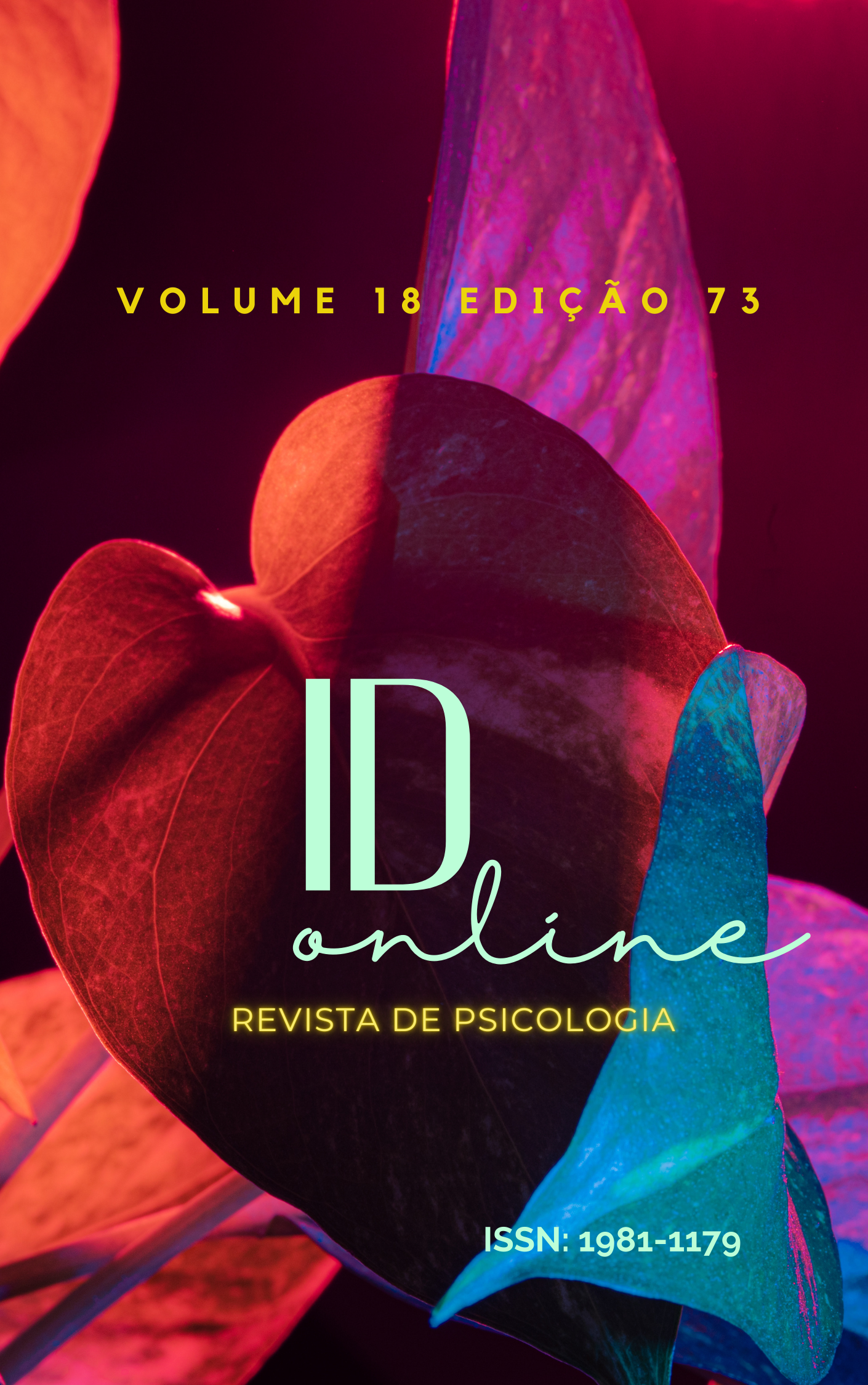Nutritional Guidelines for Individuals Diagnosed With Chronic Spontaneous Urticaria: A Scope Review
DOI:
https://doi.org/10.14295/idonline.v18i73.4068Keywords:
Chronic Spontaneous Urticaria, Scope review, Nutritional guidelinesAbstract
Chronic Spontaneous Urticaria (CSU) is defined by the spontaneous appearance of papules with or without angioedema, which persist for more than six weeks, and may or may not have a known cause. Urticaria is triggered by vasodilation, increased vascular permeability and edema, due to the release of histamine from mast cells, which can be caused by various substances. The diagnosis of CSU involves the exclusion of differential diagnoses, identification of triggering factors and assessment of impacts on individuals' lives1. Treatment includes general care, combating infectious agents and use of medications such as antihistamines, corticosteroids and, in difficult cases, antikotrienes, immunomodulators and anti-IgE. This is a scope review. The searches were carried out in October 2023, in the Virtual Library Scientific Electronic Library Online (Scielo), in the Virtual Health Library (VHL) and in Pubmed. The search strategies were used: diet AND chronic urticaria; diet AND chronic urticaria. In scientific articles, available in full, written in Portuguese, English or Spanish, published in the last 10 years (2013-2023). The initial search returned 203 files, of which, after initially applying the filters (availability of full texts, languages, year), as well as excluding duplicates, 48 texts were read as titles and abstracts. Data synthesis was carried out qualitatively, based on Bardin's Content Analysis. The results demonstrated that CSU is a disease whose etiology has not been completely elucidated, and its treatment is limited to symptoms, with the aim of inhibiting histamine release. The potential of nutritional therapy was also observed, whether with dietary limitation or micronutrient supplementation, as an adjuvant in the management of crises and reducing their severity.
Downloads
References
AYVAZ, Havva Hilal; KUYUMCU, Aliye. Effect of the Mediterranean diet in patients with chronic spontaneous urticaria. Revista da Associação Médica Brasileira, [s. l.], v. 67, p. 675–680, 2021. DOI: https://doi.org/10.1590/1806-9282.20201076
CHIANG, Hui-Ling et al. Predictors of Response to Oral Medications and Low-Histamine Diet in Patients with Chronic Urticaria. Journal of Immunology Research, [s. l.], v. 2022, p. 5243825, 2022. DOI: https://doi.org/10.1155/2022/5243825
ENSINA, L.F.C.; LIMA, F.D.; PADILHA, R.Q. Anafilaxia, urticária e alergia a medicamentos na prática clínica. 1 ed. São Paulo: Atheneu, 2014.
FERREIRA, Sila Mary Rodrigues; RETONDARIO, Anabelle; TANIKAWA, Lilian. Protocolo de Revisão de Escopo e Revisão Sistemática na área de alimentos. Visão Acadêmica, Curitiba, v.22 n.2, Abr. - Jun. /2021. DOI: https://doi.org/10.5380/acd.v22i2.79568
MATANO, Yoko et al. Dietary habits in Japanese patients with chronic spontaneous urticaria. The Australasian journal of dermatology, Australia, v. 61, n. 3, p. e333–e338, 2020. DOI: https://doi.org/10.1111/ajd.13283
RORIE, Andy et al. Beneficial role for supplemental vitamin D3 treatment in chronic urticaria: a randomized study. Annals of allergy, asthma & immunology : official publication of the American College of Allergy, Asthma, & Immunology, United States, v. 112, n. 4, p. 376–382, 2014. DOI: https://doi.org/10.1016/j.anai.2014.01.010
SÁNCHEZ, Jorge; SÁNCHEZ, Andres; CARDONA, Ricardo. Dietary Habits in Patients with Chronic Spontaneous Urticaria: Evaluation of Food as Trigger of Symptoms Exacerbation. Dermatology research and practice, Egypt, v. 2018, p. 6703052, 2018. DOI: https://doi.org/10.1155/2018/6703052
SON, Jee Hee et al. A Histamine-Free Diet Is Helpful for Treatment of Adult Patients with Chronic Spontaneous Urticaria. Annals of dermatology, Korea (South), v. 30, n. 2, p. 164–172, 2018. DOI: https://doi.org/10.5021/ad.2018.30.2.164
WAGNER, N. et al. A Popular myth - low-histamine diet improves chronic spontaneous urticaria - fact or fiction?. Journal of the European Academy of Dermatology and Venereology : JEADV, England, v. 31, n. 4, p. 650–655, 2017. DOI: https://doi.org/10.1111/jdv.13966
WU, Cheng-Han et al. Association between Micronutrient Levels and Chronic Spontaneous Urticaria. BioMed research international, United States, v. 2015, p. 926167, 2015. DOI: https://doi.org/10.1155/2015/926167
ZUBERBIER, T. et al. The EAACI/GA2LEN/EDF/WAO guideline for the definition, classification, diagnosis and management of urticaria. Allergy, [s. l.], v. 73, n. 7, p. 1393–1414, 2018. DOI: https://doi.org/10.1111/all.13414
ZUBERBIER, Torsten; HENGSTENBERG, Claudine. [Risk hidden in the small print? : Some food additives may trigger pseudoallergic reactions]. Bundesgesundheitsblatt, Gesundheitsforschung, Gesundheitsschutz, Germany, v. 59, n. 6, p. 777–782, 2016. DOI: https://doi.org/10.1007/s00103-016-2347-2
Downloads
Published
How to Cite
Issue
Section
License
Copyright (c) 2024 Symara Abrantes Albuquerque de Oliveira Cabral, Carlos Kennedy Tavares de Lima, Leonardo Coêlho Bezerra

This work is licensed under a Creative Commons Attribution-NonCommercial 4.0 International License.
Os autores detêm os direitos autorais sem restrições, devendo informar a publicação inicial nesta revista, em caso de nova publicação de algum trabalho.










